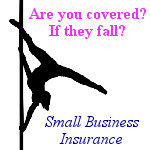You should at this point have gone through the first dozen items on the checklist. You have especially your license, insurance and now location. Now it is time to start putting together your studio to accept students.
Designing Your Studio
Planning the arrangement of your studio should have the dual goals of being functional as well as attractive. It begins with the entryway. It should be inviting and “speak” as a pole studio. Could be as simple as some pictures on the wall. The room or area for poling needs to have spacing for all pole moves & spins that may be performed. The minimum recommended spacing is 6 feet pole to pole. If you may be adding more poles in the future, you may want to plan the spacing to keep space available for additional poles. Some studios reserve space for general fitness classes or chair dancing as well.
Mirrors are very helpful for pole dancing and general fitness. You can get large mirrors or mirror tiles to completely cover the walls. When starting your studio, to keep expenses low several hanging wall mirrors which can be simply on the ground work quite well. A couple of pole dancing posters will make it look like a pole dancing studio. Even some very busy & established studios have no more. You should have at least a couple of chairs as pole dancing can be too fatiguing for some people either because they are out of shape, in poor health or just overdoing it. They can be even inexpensive folding chairs and do not have to be in the same room as the poles.
You will also need a bathroom and changing area. They can be the same room. Some studios have converted a closet for changing. Still another simply added a curtain and chair at the end of a hallway. Whether shared or separate the bathroom & changing area must be cleaned at least once daily. The bathroom should be kept stocked with paper hand towels, toilet paper and soap. It should also have a toilet brush and a plunger for emergencies is recommended.
Classes & Class Schedule
Nearly all studios will find that the mornings of Monday through Saturday and evenings of Monday through Thursday are the most desirable for classes. The other times work well for private pole lessons or pole parties if you should also include them. Some studios found an evening only with Saturday morning schedule works well in the beginning. Evening class times should be no earlier than 5:00pm and end by 9:00pm.
Classes will need to be a combination of levels:
•Beginner •Intermediate •Advanced
As well as varying focus:
•Pole Dance •Fitness •Routines •Open Practice •Introduction •Floorwork
Initially most if not all of your classes should be Beginner or Intermediate levels. Even if some people state they are advanced pole dancers, you will need to perform some type of assessment to see what level they are. It also can be dangerous teaching some people moves at a level way beyond their capability. If you are one of the first pole studios in your area, you may find a shortage initially of experience pole dancers.
While you may consider pole dance the main focus, you will have to incorporate the others. Pole Fitness is not just for those looking to get fit. Some people who are new to pole would rather take a pole “fitness” class. Not everyone is about it being sexy. It is more socially acceptable and easier to tell family or friends they are taking a fitness class. Unfortunately the industry & society has a way to go before all of pole dance will be fully acceptable and without stereotypes. This is the reality we are in. Pole Fitness classes can be broken down to strength building and another for a cardiovascular workout. Making these classes fun is what often draws students to a pole studio for fitness rather than the local gym.
There will be dancers who have been learning pole moves & spins at home or elsewhere but now want to be able to put it all together into a routine or performance. A Routines class serves this and general combinations well although when starting this may be hard to fill. As your students progress, they can help fill this class.
Open practice is just that. For students who have taken other classes, this gives them time to practice be it mastering a new move from class, a specific technique or just some time on the pole. Many of these people do not have a pole at home. The instructor is present more for general assistance and should reserve new material for the classes. Many studios choose to include a five minute warmup to protect students from injuries with cold muscles.
Floorwork is often an area of disagreement within the pole world. Some believe it is a part of most pole dance classes. Others take it as an art form unto itself. It can also help serve as the first step into the world of pole dancing. There also are many experienced pole dancers who seek out floorwork instruction as they have spent so much time on moves & spins they are lacking in floorwork skills they need for performance.
Introduction classes are often the introduction of new students. Many studios even established, use them as a draw with monthly classes offered at a great discount or even free (one time). The idea for people that absolutely no experience, knowledge or physical ability is required to attend helps make up their mind to give it a try. Introduction classes can be used as a prerequisite for attending other classes so you can properly assess their ability. Many studios have this class for a shorter period of from 30-45 minutes.
There is one area of focus that falls under pole dancing but is mentioned separately as some studios do. The Burlesque, Naughty, Exotic or Stripper class. Whatever you call the class, it is a throwback to when pole dancing was mainly knowing for strippers and being sexy. Complete nudity is not advised and may be illegal in some areas. The trick for teaching any clothes removal without being naked is layers of clothes. Some of these sexy classes do not include advanced pole moves or inverting. Some may not include pole work except at a minimal level. Still others incorporate the stripper side as part of a routine. While not everyone’s cup of tea, there are some that see this as the next evolution in their poling ability.
Additional classes can of course include chair dancing, Lap dance, belly dance, Zumba, hoop and cardio dance. There are too many types of classes to list here. Some work well is some areas and not at all in others. Often there is a trial and error to seeing what classes will bring in students.

 Insurance cost will be determined by several factors including the physical size of the facility, your annual revenue, type of equipment and services offered. If you also do training or pole parties off-site that will have to be included or done a as rider to the policy. As important it is to know what is covered by your insurance policy, it can be more important to know what is not covered. You may find you will need to have three separate policies. One insuring the premises and another for liability and yet another as an instructor.
Insurance cost will be determined by several factors including the physical size of the facility, your annual revenue, type of equipment and services offered. If you also do training or pole parties off-site that will have to be included or done a as rider to the policy. As important it is to know what is covered by your insurance policy, it can be more important to know what is not covered. You may find you will need to have three separate policies. One insuring the premises and another for liability and yet another as an instructor. You need to be proactive to decrease your exposure to liability. Many think a signed waiver is all you need. That is totally false. If someone is injured in your studio there is nothing including a signed waiver to keep a lawsuit from happening. A waiver is simply that you notified that some risk exists. Many successful lawsuits were against facilities with signed waivers.
You need to be proactive to decrease your exposure to liability. Many think a signed waiver is all you need. That is totally false. If someone is injured in your studio there is nothing including a signed waiver to keep a lawsuit from happening. A waiver is simply that you notified that some risk exists. Many successful lawsuits were against facilities with signed waivers.